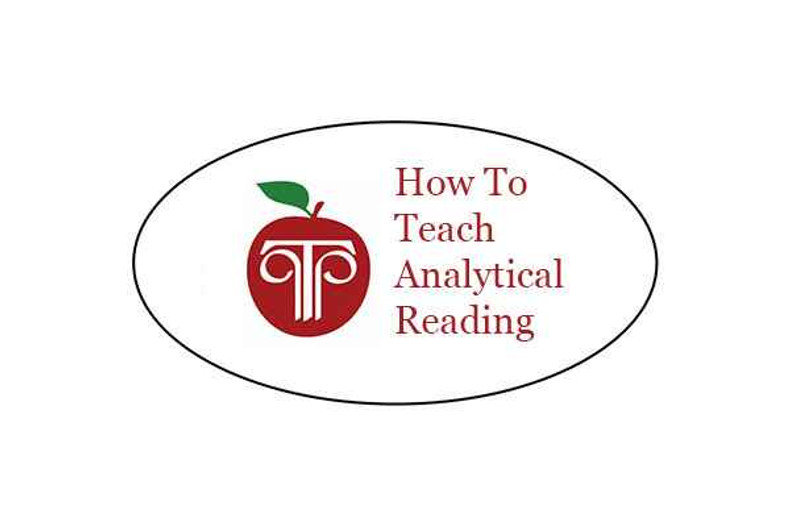The essence of analytical reading is being able to recognize and understand things that aren’t written on the page by reading that which IS written on the page. Sounds kind of goofy, but it’s true. How do you teach someone how to do that?!
First, recognize that it doesn’t happen overnight.
Analytical reading skills are developed over a period of time, not in one day, one week, or even one school year. With consistent practice, though, it’s a skill that can be and should be learned.
Don’t tear your hair out fretting if your students just don’t “get it” right away. Developing this skill requires patience and persistence.
Do what you can.
In our middle and high school English classes, there are ample opportunities in the normal course of business, so-to-speak, for practicing analytical reading skills. It’s your job to recognize when those opportunities exist and to take advantage of them. It could be as simple as challenging a student with, “Yes, that’s what the author says, but what does he actually mean?” Or asking, “Why would the author say it that way?” Frequent, little challenges give students practice and develop critical thinking habits. Having a whole unit in which you study and practice analytical reading is good, but it’s the constant drip approach that forms patterns of thinking.
Become known as the teacher who always questions and challenges students. They’ll remember you for that, and you will leave a lasting impression. Don’t be a pain in the neck about it, but gently suggest there may be more by asking a question when the opportunity comes along. I bet you still hear in your head something your mom or dad or a teacher said to you over and over again. You want to become that little voice your students hear, prodding them to question, to think, to analyze.
Pick it apart.
Regarding the study of literature, the question invariably comes up, “Why do we have to pick it apart; why can’t we just enjoy reading the book?” The answer is very simple. We pick it apart to learn how to pick it apart, to be able to see more than what is written on the surface. Picking apart literature is one way to learn analytical reading and analytical thinking.
So--go for it! Take passages from the novel you’re reading and rip them apart looking for figurative language, idioms, and allusions. Find those inferences. Analyze specific word choice. Look at sentence structure and plot structure, foreshadowing, flashbacks, and climaxes. These things are the construction materials the author uses to build the ride she takes us on in the story. Yes, recognizing them enriches our understanding of the story, but--more importantly--it shows us how the author manipulates us: making us like some characters and not others, making us happy or sad, making us see through the eyes of a character, or making us believe the point of the story is true.
In nonfiction, authors have some slightly different construction materials but the effect is essentially the same. The way the words are used, the way the piece is constructed--these are the building blocks of perception and persuasion. Choose short articles and pick them apart looking at word choice, construction, evidence of slant or bias, and methods of persuasion.
Let students own it.
Model analytical reading. Show students how to do it. Show them the questions to ask as they read. Work with them to teach them the principles. Then, gradually turn the reins over to them. After you work on it together as a class, let them go into small groups and challenge each other with questions. Let small groups get together to make questions to challenge you regarding some passages. (They love that!)
As students learn more about analytical reading, let them own more of the responsibility for it in your classroom...and beyond, if they’ll take the challenge. Let them make questions, lead small group or whole class discussions. The more they own it, the more alive your classroom will be and the better they will become at analytical reading and analytical thinking.




